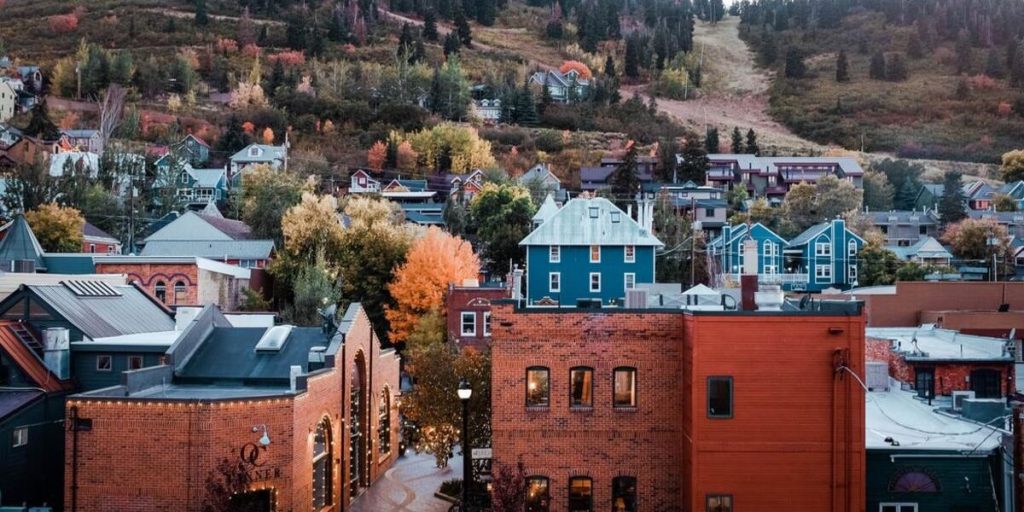A lot of people talk about how beautiful Utah is, how great the economy is, and how lively the towns are. Having said that, not every municipality in the Beehive State is thriving economically. Actually, people are leaving some cities in droves in quest of better employment and living circumstances, and the result is a dramatic drop in population. In this post, we’ll look at five Utah towns whose residents are fleeing in all directions for various reasons.
Delta
Located in Millard County, Delta has always been a quiet and steady farming town. Unfortunately, economic difficulties and environmental concerns have diminished Delta’s once beautiful landscape and close-knit community.
Agriculture and energy production are the backbone of Delta’s economy. Job prospects have taken a major hit due to the shutdown of nearby coal facilities and the general downturn in agricultural profitability. Lower than the state average of $74,000, the typical household income in Delta is roughly $50,000.
Aridity and dust storms have been on the rise in the Sevier Desert, which Delta lies close to. In addition to negatively impacting people’s day-to-day lives, these environmental problems discourage potential new businesses and families from moving to the region.
People often say that they’re leaving for cities because there aren’t enough modern conveniences there, such as stores, hospitals, and entertainment venues.
Eureka
Located in Juab County, the town of Eureka was formerly a thriving mining hub. Even with its charming downtown and long history, folks are still choosing to stay.
There are fewer job openings in Eureka now that the mining industry is on the decrease. Incomes in this area are significantly lower than the state average, with a median of $48,000.
Due to underfunding of public services and an outdated infrastructure, Eureka is in a sorry state. Poor infrastructure, including outdated schools, roads, and utilities, is driving families away from the town in search of greener pastures.
A major factor in the town’s population reduction is the inconvenience of residents having to drive vast distances to receive decent healthcare services.
Green River

The historical and scenic Green River in Emery County is well-known. various have left the town because of the various problems it has.
Food production and visitor spending power Green River’s economy. The low salaries and reliance on seasonal work make it difficult for people to maintain a good quality of living, especially considering the median household income of $45,000.
Because of its isolated position, the community lacks easy access to basic necessities. Commutes and healthcare access are both made more difficult by the fact that the closest large city, Grand Junction, Colorado, is more than 100 miles away.
Only a small number of schools in Green River provide even the most fundamental forms of education. Many families find themselves permanently relocating in pursuit of higher education or specialized expertise.
Monticello
The historic and scenic town of Monticello is located in San Juan County. There are major social and economic issues there, despite the beautiful scenery.
The mainstays of Monticello’s economy are the agricultural sector and locally owned enterprises. Limited job options and seasonal employment contribute to economic instability, with a median household income of roughly $47,000.
Monticello has limited access to healthcare and high-quality education. Residents frequently travel great distances for access to medical care and higher education due to the town’s isolated position.
Many people, especially the younger generation, feel lonely and alone in Monticello due to the town’s tiny size and remote location. People are looking for more active groups as a result of this isolation.
Price
The coal mining business has historically relied on Price, a town in Carbon County. But with the industry falling, the town is facing a lot of problems, and people are leaving.
The coal mining industry’s downfall has had a devastating effect on Price’s economy. There is a high unemployment rate, and the median household income is far lower than the state average, at $52,000.
Environmental concerns, such as mining-related air and water pollution, have an impact on prices. Health dangers and a lack of investment are the results of these worries.
Many of Price’s younger citizens depart for other towns in quest of higher education and better employment prospects. Retaining and attracting a younger population is challenging due to the town’s isolation and lack of diversified economic options.
Summary
There are many successful municipalities in Utah, but five of them have been experiencing population declines due to major problems. The main reasons why people leave are economic hardship, environmental worries, lack of healthcare and education options, and social isolation. To build sustainable and thriving communities where people may prosper, local governments, companies, and community leaders must work together to address these concerns.